
June 10
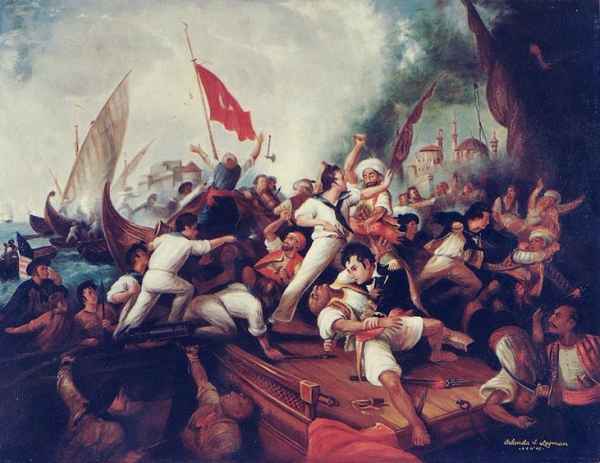
1805 First Barbary War: Tripoli's Yussif Karamanli signs a treaty with the US ending the conflict. (Lambert)
1893 USA: Segregation: The San Francisco Board of Education begins, by resolution, segregating Japanese students to the Chinese school. The resolution is repealed after intense protests by the Japanese consul. (Niiya)
[See: Countdown to Infamy: Timeline to Pearl Harbor.]1915 World War I: List Regiment:
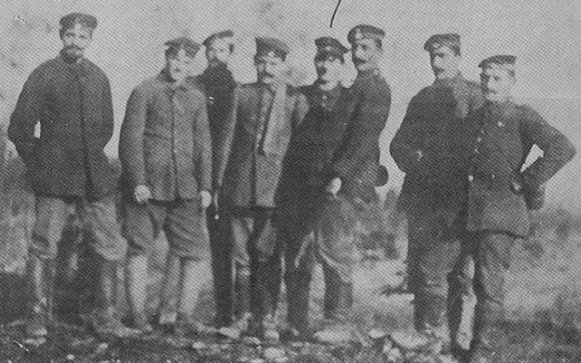
Hitler and his fellow dispatch runners
1916 World War I: Various:
List Regiment: Gefreiter Adolf Hitler continues to endure trench warfare in Flanders (Artois) with 3 Company, 16 Reserve Infantry Regiment. [For further details, Click here.]
Italy: The Austrian drive in the Trentino area is halted by difficult terrain and arrival of Italian reinforcements. An Italian counteroffensive and the desperate need to rush troops to the Eastern Front causes the Austrians to withdraw to defensive positions. Italian casualties reach more than 147,000; Austrian 81,000.
1917 World War I: Various:
List Regiment: Gefreiter Adolf Hitler's 16th RIR remain east of Douai for a period of rest which will extend until June 24. [For further details, Click here.]
Italians renew battle on mountain-tops in Trentino: Italian troops launch a renewed assault on Austro-Hungarian positions in the mountains of the Trentino region in northern Italy, on the border with Austria.
1918 World War I: List Regiment (June 1-17): The 16th RIR hold the Front at Aisne and the Marne. [For further details, Click here.] 1924 Death: Giacomo Matteotti: Italian Socialist leader, kidnapped and murdered by Fascists. The death of Matteotti sparked widespread Fascist criticism: a general strike was threatened in retaliation and for a while it seemed that domestic and international pressure would force Victor Emmanuel into action, but as the King was supported so strongly by Mussolini and was worried he would otherwise be replaced by his cousin, he did nothing. Thus, Mussolini was soon able to use his influence over the media to regain the people's confidence.
1935 Holocaust: Albania announces that only German Jews with capital to invest are welcome.
1940 World War II: Various:
Norway: Surrender:
After two months of desperate resistance, the last surviving Norwegian and British defenders of Norway are finally overwhelmed by the Germans after the country is forced to capitulate to the Nazis. Two months earlier, on April 9, Nazi Germany launched its invasion of Norway, capturing several strategic points along the Norwegian coast. During the preliminary phase of the invasion, Norwegian fascist forces under Vidkun Quisling acted as a so-called "fifth column" for the German invaders, seizing Norway's nerve centers, spreading false rumors, and occupying military bases and other locations. Vidkun Quisling served as the Norwegian minister of defense from 1931 to 1933, and in 1934 he left the ruling party to establish the Nasjonal Samling, or National Unity Party, in imitation of Adolf Hitler's Nazi Party. Although Norway declared neutrality at the outbreak of World War II, Nazi Germany regarded the occupation of Norway a strategic and economic necessity. In the spring of 1940, Vidkun Quisling traveled to Berlin to meet with Nazi command and plan the German conquest of his country. On April 9, the combined German forces attacked without warning, and by June 10 Hitler had conquered Norway and driven all Allied forces from the country. Although Quisling was the head of the only political party permitted by the Nazis, opposition to him in Norway was so great that it was not until February 1942 that he was able to formally establish his puppet government in Oslo. Under the authority of his Nazi commissioner, Josef Terboven, Quisling set up a repressive regime that was merciless toward those who defied it. However, Norway's resistance movement soon became the most effective in all Nazi-occupied Europe, and Quisling's authority rapidly waned. After the German surrender in May 1945, Quisling was arrested, convicted of high treason, and shot. From his name comes the word quisling, meaning "traitor" in several languages. (History.com)
1940 World War II: Italy declares war on France and Great Britain: On this day in 1940, after withholding formal allegiance to either side in the battle between Germany and the Allies, Benito Mussolini, dictator of Italy, declares war on France and Great Britain.
What caused Il Duce's change of heart? Perhaps the German occupation of Paris did it. "First they were too cowardly to take part. Now they are in a hurry so that they can share in the spoils," reflected Hitler. (However, Mussolini claimed that he wanted in before complete French capitulation only because fascism "did not believe in hitting a man when he is down.")
Italy's lack of raw materials had made Mussolini wary of waging all-out war previously. Britain and France were also wooing him with promises of territorial concessions in Africa in exchange for neutrality. But the thought of its Axis partner single-handedly conquering the Continent was too much for his ego to bear. While Germany had urged Italy's participation in September 1939, at this late date such intervention would probably prove more of a hindrance than a help. For example, despite Italy's declaration of war on the 10th, it wasn't until the 20th that Italian troops were mobilized in France, in the southwest-and easily held at bay by French forces.
The reaction by the Allies to the declaration of war was swift: In London, all Italians who had lived in Britain less than 20 years and who were between the ages of 16 and 70 were immediately interned. In America, President Roosevelt broadcast on radio the promise of support for Britain and France with "the material resources of this nation." (History.com)
France: Prime Minister Reynaud appeals to President Roosevelt to intervene in the war in Europe as German forces, under General Erwin Rommel, reach the English Channel. North Africa: When Italy declared war on June 10, 1940 against Britain and France, the British position in North Africa seemed hopelessly outmatched . . . . Wavell made a bold gamble on June 10, sending a small force into Libya to show the flag. This was the opening battle in a long campaign that would frustrate both the Allies and the Axis.
1942 World War II: Various:
Russian Front: 6 Armee forces the withdrawal of Soviet forces from the Kharkov area and captures Volchansk and Kupyansk. North Africa: In Libya, the Afrikakorps (properly, Panzerarmee Afrika) finally captures Bir Hakeim, a strongpoint fiercely defended by Foreign Legionaires of the Free French Forces. The British Eighth Army (Ritchie) retreats toward the Egyptian border.
Lidice had been implicated in the assassination of Reinhard Heydrich, the Nazi controller of Bohemia and Moravia, and Hitler's order was given to "teach the Czechs a final lesson of subservience and humility".
On May 27th, 1942, Heydrich was attacked by British-trained freedom fighters - one born in the current Czech Republic and the other, Jozef Gabcik, born in Slovakia. A grenade attack on his car left him fatally wounded and he died on June 4th. Hitler had always had a high opinion of Heydrich. Some believe that Hitler was grooming Heydrich to succeed him and the Fuehrer said that "he has a heart of iron". Energetic and efficient, Heydrich brought a reign of terror to Czechoslovakia and his death enraged Hitler.
The man appointed to take over from Heydrich, Karl Frank, pointed out that the loss of 30,000 would have a severe impact on the Czech labour force. Hitler took this on board and changed the figure to the arrest of 10,000. On the night of May 27th, Heinrich Himmler, head of the SS, ordered Frank to shoot 100 "intellectuals" that night. Over the next few days, 3,188 Czechs were arrested of whom 1,357 were executed, while 657 died in police custody. However, none of this satisfied Hitler, though he had recognised the fact that 30,000 executions would have a negative impact on the labour force in Czechoslovakia.
On June 8th, a state funeral was held for Heydrich. On the next day, Frank received an order from Hitler which stated that a small community near an industrial centre was to be selected and wiped out as punishment. Therefore, there would be no impact on the Czech labour force, but Hitler would have gained his desired for revenge.
But why was Lidice chosen? One of the men who assassinated Heydrich had links to Lidice (the assassins were all killed). Also the Gestapo had intercepted what they deemed to be a "suspicious" note that contained the name Lidice. In fact, it was another Lidice in Czechoslovakia – but this only came to light afterwards, once the arrangements had been made to wipe out Frank's chosen target - Lidice near Prague.
Lidice was about 10 miles from Prague. The village was off any main road so the sighting of any German troops en masse was rare. With 100,000 German troops in Czechoslovakia, German troops had been seen in Lidice but only in small numbers. On June 4th, the day of Heydrich's death, German troops entered Lidice, the Gestapo questioned people and houses were ransacked. Then they suddenly left leaving the villagers confused as to why they had done this.
On June 9th, they returned in the evening. Most of the villagers had gone to bed. They were woken and made to gather in the village square. Women and children were put on one side and men and boys over 15 were put on the other side of the square. The men and boys were put in farm buildings while the women and children were locked into the local school.
After the villagers had been locked away, military police ransacked the homes once again and took anything of value. All farming tools were taken and cattle were herded up. Anything of the remotest value was taken.
At 05.00 the next day, the198 women and 98 children were put onto lorries and driven away. They were transferred to Ravensbruck concentration camp. Those children who were considered suitable for 'Germanisation' were picked out and given to SS families. Those who were not considered suitable were scheduled to be sent to the camps. The men were brought out of the farm houses and lined up in front of mattresses laid against a wall - see the photograph above. The execution squad brought them out in batches of ten. 173 were shot. Those men who lived in Lidice but who were on shift work at the local factories when the arrests were made, were rounded up later – a further 19 were shot. Those men who were in Lidice at the time visiting relatives and friends, but who were not from Lidice, were also shot.
The village was then destroyed; literally wiped off of the map. Houses were destroyed, orchards dug up and the graveyard desecrated. Even pet dogs were shot. When this was done, pioneer troops were sent in to plough the land flat. Seemingly nothing was left of the village, not even the outline. The whole episode was filmed by the SS.
Of the women, only 143 are known to have somehow survived Ravensbruck, the Nazi concentration camp for women. Of the 98 children (who, owing to "transport difficulties", were separated from their mothers on June 12th), 17 are known to have survived by being selected for 'Germanisation'. They returned to Czechoslovakia after the war. Those children not considered suitable were gassed at Chemnitz on the orders of Adolf Eichmann.
1943 World War II: Area bombing directive: Beginning of a coordinated air offensive by the US 8th Air Force (Doolittle), flying precision bombing missions by day, and RAF Bomber Command (Harris), flying area saturation missions by night, against major German cities.
The government of the Third Reich authorised the bombing of civilian targets from the first days of the war. The British government ordered the RAF to adhere strictly to the Amsterdam draft international rules prohibiting attacking civilian infrastructure outside the combat zones, but this adherence was abandoned on May 15, 1940, one day after the Rotterdam Blitz. On August 24, 1940 some German aircraft strayed over London and dropped bombs in the east and northeast of the city. A period of reciprocal retaliation begun, mainly focused on industrial areas. In February 1942 the British abandoned attempts at strategic precision bombing and with the issuing of the area bombing directive to the RAF, put most of their strategic bombing efforts into area bombardment and the "dehousing" of the German workforce.
1944 World War II: Various: Normandy:
Churchill, Smuts, Brooke, General Marshall and Admiral King cross the Channel and are met by Montgomery. After a beach welcome they drive through "our limited but fertile domain in Normandy." They lunch on the lawn at Montgomery's headquarters, looking towards the front which was only three miles away. Note: Churchill inquires about the chances of German armor breaking up their lunch. Montgomery acknowledges that the chateau had indeed taken a pounding the night before. (THP)
Oradour-sur-Glâne:
German soldiers began encircling the village of Oradour-sur-Glâne. A unit of 120 soldiers from the Waffen SS tank division entered the village and instructed everyone to assemble in the central marketplace. Other soldiers in armored cars rounded up men and women working in nearby farms and fields.
At about three o'clock the soldiers separated the women and children from the men. They were taken to the church and locked in. Major Otto Dickman, announced that the SS knew that the village was hiding arms and munitions for the French Resistance. Dickman then told the mayor, Paul Desourteaux, to select hostages from among those assembled in the marketplace. The mayor refused, offering himself and his sons instead.
Dickman rejected Desourteaux's offer and ordered that all the men be divided into groups and moved them to various barns and garages in the village. The SS soldiers then opened fire on the men. The only ones to survive were five young men from a group of 62 taken to the Laudy barn.
At five o'clock two German soldiers entered the church and placed a large chest on the altar. They walked out, laying out a long fuse as they went, which they lit before shutting the door. A few seconds later the chest exploded. Some managed to survive the blast but were shot dead by the soldiers as they scrambled out of the bombed building. Only Marguerite Rouffanche managed to get out of the church and escape the bullets being fired by the SS soldiers. Although she was wounded she managed to hide until the Germans left the village.
The Germans then destroyed Oradour-sur-Glâne. A total of 642 people were killed during the SS operation. This included 393 people living in the village, 167 people from neighbouring villages, 33 people from Limoges, and 25 others from different parts of the Haute-Vienne. Around 80 residents of Oradour survived. This included the five men from the Laudy barn, Marguerite Rouffanche from the church, 28 people who managed to hide during the roundup and 36 others who happened to be away for the day. Another 12 men were in Germany as part of Vichy's compulsory labour service.
Local hamlets also suffered high losses. Eight children of Le Mas du Puy attended the school at Oradour. Four mothers, concerned that their children had not come home from school, had gone to Oradour to look for them. They died with their children in the church.
In 1946 the French government decided to preserve the ruins of Oradour-sur-Glâne. The forty acres of crumbling buildings became a martyred village. A testament of French suffering under the German occupation and an example of Nazi barbarism. [For further details, Click here]
Holocaust: Anti-Jewish Congress: Professor Eugen Fischer:
Dear Reichsminister! That you intend to create a scientific front line for the defense of European culture against the influence of Jewry, and to call together for that purpose scientists from all the nations fighting Jewry, seems to me a very good idea and absolutely necessary, if I may allow myself to express such opinions . . . . I am delighted to accept your invitation to attend this congress. (See June 1944) (THP)
1946 Nuremberg Tribunal: Defendant Arthur Seyss-Inquart testifies:
In many conversations with Dr. Schuschnigg but most of all in continual discussions with Zernatto, I suggested, in line with the conclusions I had drawn from the events of 25 July 1934, that the Reich, and particularly Hitler, be asked to refrain from any interference in Austrian politics through the medium of the Austrian National Socialist Party.
I proposed that instead the Austrian National Socialists should receive permission to resume activities. That did not mean at all that I would give up the Anschluss, but I was completely convinced that a lawful and responsible policy of the Austrian National Socialists in Austria would in the course of time win for them the support of a clear majority of the Austrian nation-I mean of the Germans in Austria; and that the demonstration of such a clear majority would no longer be challenged by the powers of the League of Nations.
One had to attempt to make Adolf Hitler agree to such a policy by enlisting the support of the autonomous and independent state of Austria for the Fuehrer's policy and the demand for equal rights of the German people. It was in the interests of these ideas that I talked to Field Marshal Goering and Herr Hess. I reported the outcome of these conversations to Dr. Schuschnigg and to Zernatto and I recommended the formation of a coalition government by taking National Socialist ministers into the cabinet, on condition that Adolf Hitler offer adequate guarantees.
My suggestions made no headway with either of the two parties, but were not directly turned down. Meanwhile, the Austrian National Socialists continued to be active illegally; the police intervened and made arrests; three Austrian concentration camps were set up; in short, the events of that time foreshadowed today's denazification system. [For the full text of today's proceedings, Click here.] The tall, introverted Seyss-Inquart, who had led Austria into the Anschluss with Germany, limped badly as a result of a World War I wound that left one leg shorter than the other. A highly intelligent sophist and opportunist, his studious, slightly fish-eyed appearance was accentuated by his thick-lensed glasses . . . . Limping to the witness stand, his eyes swimming like egg yolks behind his thick glasses, Seyss-Inquart presented the image of a colorless bureaucrat, neither evil nor immortal: a politically vapid, lukewarm Nazi who had not joined the party until two months after the Anschluss which he had brokered . . . . Although Seyss-Inquart had been indicted for his role in the Anschluss as much as for his administration of Holland, it was his actions in the Netherlands on which he was going to be primarily judged. 1946 Italy: A republic replaces the former monarchy.
1953 Cold War: Eisenhower rejects calls for U.S. isolationism:
In a forceful speech, President Dwight D. Eisenhower strikes back at critics of his Cold War foreign policy. He insisted that the United States was committed to the worldwide battle against communism and that he would maintain a strong U.S. defense. Just a few months into his presidency, and with the Korean War still raging, Eisenhower staked out his basic approach to foreign policy with this speech. [For further details, Click here]
1959 Death: Zoltan Mesko: Hungarian Nazi. Mesko even went as far as growing a toothbrush moustache in an attempt to physically resemble Adolf Hitler. He became one of the three leaders of the amalgamated Hungarian National Socialist Party in 1934, but was expelled as part of a power struggle the following year. Mesko returned to parliament in 1939 as an independent national socialist, although his fervour for Hitler had begun to dampen. Increasingly disillusioned with Germany, he played little role in the wartime politics of Hungary. Despite this he was sentenced to life imprisonment in 1945, although he was released before his death.
1973 Death: Erich von Manstein: German military commander.
Erich von Manstein, the son of an artillery officer, was born in Berlin, Germany on 24th November 1887. He was an Imperial court page before spending six years in the cadet corps. He joined the German Army and in 1906 was commissioned in the 3rd Footguards. After the outbreak of the First World War Manstein served in Belgium before being wounded in Poland on November 1914. After recovering he returned to the Eastern Front before being sent to France in 1917 . . . . In the invasion of Poland Manstein served as chief of staff to the Army Group South under General Gerd von Rundstedt. In 1940 Manstein worked with Guenther Blumentritt and Henning von Tresckow to develop the plan to invade France. Manstein and his colleagues suggested that the German Army should attack through the wooded hills of the Ardennes. Hitler originally rejected the proposal but he eventually approved of a modified version of what became known as the Manstein Plan. Manstein was sent back to Silesia and did not take part in the successful operation until the final stages when he served under General Gunther von Kluge. In February 1941, Manstein was appointed commander of the 56th Panzer Corps. He was involved in Operation Barbarossa where he served under General Erich Hoeppner. . . . . Promoted to field marshal Manstein was sent to capture Leningrad. This led to a series of bitter battles and over the next few months lost over 60,000 men. In November 1942, Adolf Hitler ordered Manstein to rescue Friedrich von Paulus and the 6th Army at Stalingrad. He got his three panzer divisions to within 35 miles of the 6th Army but a Red Army counter-attack forced him to retreat to the Ukraine. Manstein regrouped and the following year inflicted a heavy defeat on the Soviets at Krasnograd. An estimated 23,000 Soviet soldiers were killed and a further 9,000 were captured. Manstein now went on to capture Kharkov (14th March) and Belgorod (18th March). Adolf Hitler now overruled Manstein's desire to push the Soviet troops to the Sea of Azov. Instead he was ordered to Kursk. Manstein continued to argue with Hitler about overall strategy and in March 1944 he was dismissed from office. After the war Manstein was charged with war crimes. In court Manstein argued that he was unaware that genocide was taking place in territory under his control. However, evidence was produced that Manstein had ordered that "the Jewish Bolshevik system be wiped out once and for all" although he requested that officers should not be present during the killing of Jews. Manstein was found guilty and he was sentenced on 24th February 1950 to 18 years imprisonment. However, for medical reasons he was freed on 6th May 1953. His war memoirs, Lost Victories, was published in Germany in 1955.
Edited by Levi Bookin (Copy editor) Click to join 3rdReichStudies Disclaimer: This site includes diverse and controversial materials—such as excerpts from the writings of racists and anti-Semites—so that its readers can learn the nature and extent of hate and anti-Semitic discourse. It is our sincere belief that only the informed citizen can prevail over the ignorance of Racialist "thought." Far from approving these writings, this site condemns racism in all of its forms and manifestations. 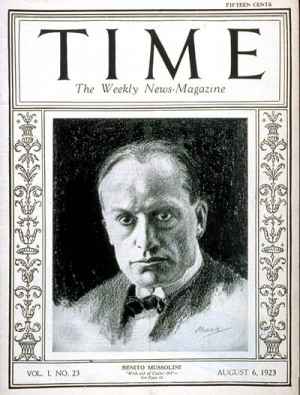
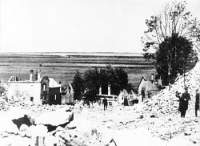
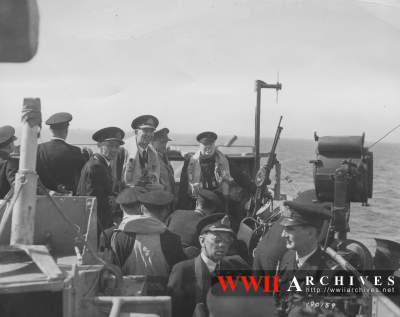
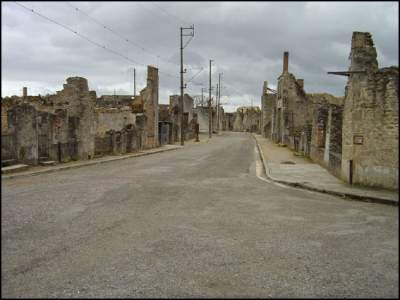
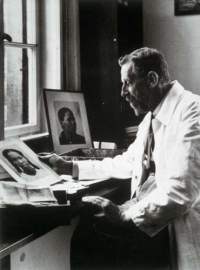
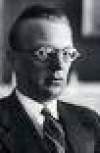
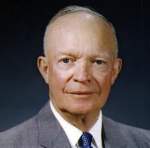
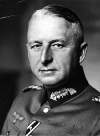
levi.bookin@gmail.com







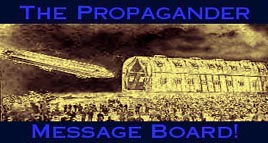


Fair Use Notice: This site may contain copyrighted material the use of which has not always been specifically authorized by the copyright owner. We are making such material available in our efforts to advance understanding of historical, political, human rights, economic, democracy, scientific, environmental, and social justice issues, etc. We believe this constitutes a "fair use" of any such copyrighted material as provided for in section 107 of the US Copyright Law. In accordance with Title 17 U.S.C. Section 107, the material on this site is distributed without profit to those who have expressed a prior interest in receiving the included information for research and educational purposes. If you wish to use copyrighted material from this site for purposes of your own that go beyond 'fair use', you must obtain permission from the copyright owner.
Please Note: The list-owner and moderators of 3rdReichStudies are not responsible for, and do not necessarily approve of, the random ads placed on our pages by our web server. They are, unfortunately, the price one pays for a 'free' website.